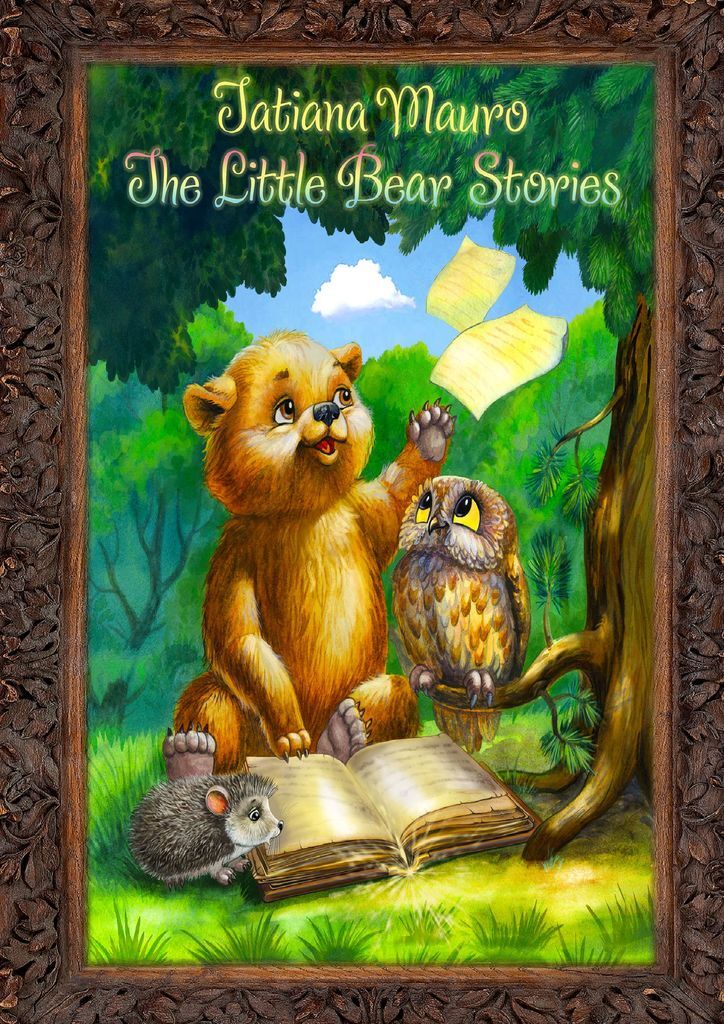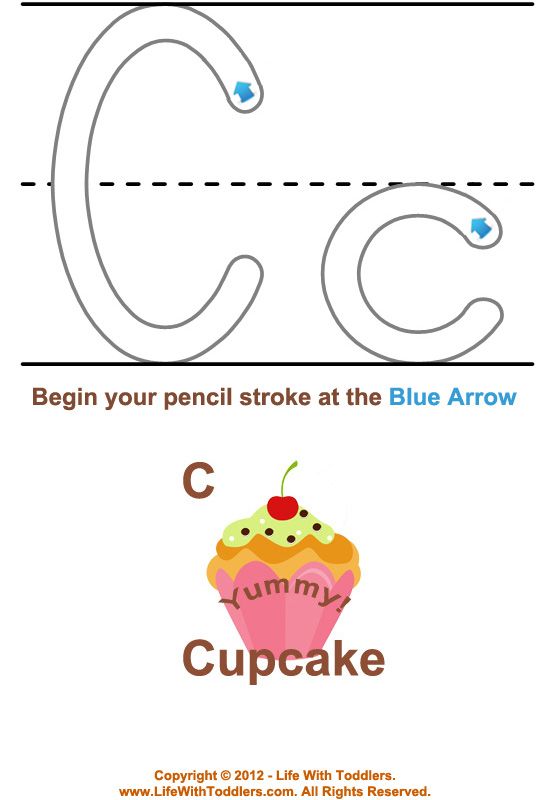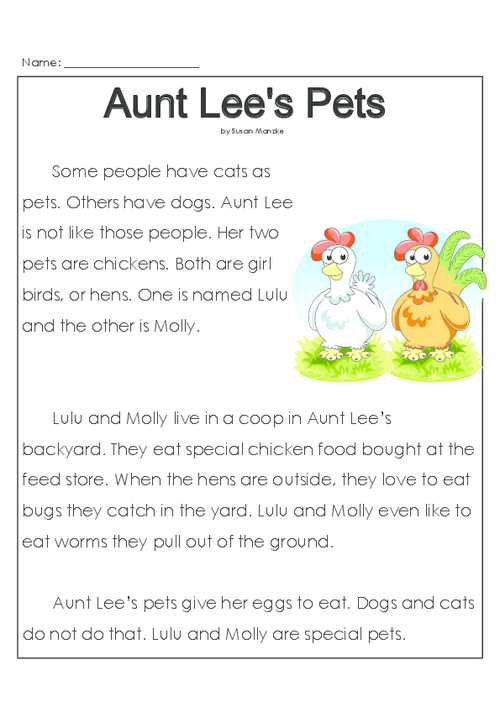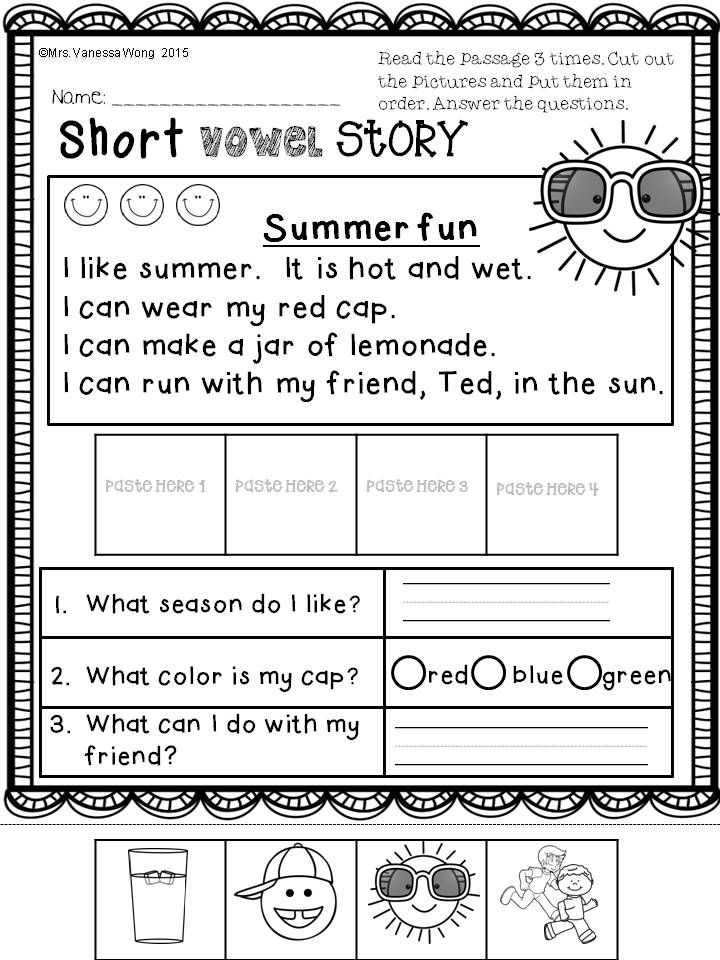Little bears story
Goldilocks and the Three Bears
Goldilocks and the Three Bears was originally titled The Story of the Three Bears, published in the collection English Fairytales, retold by Flora Annie Steel (1922), illustrated by Arthur Rackham. We hope you think it's not too hot, not too cold, but JUST RIGHT!
This story is featured in our Favorite Fairy Tales.
Once upon a time there were three Bears, who lived together in a house of their own, in a wood. One of them was a Little Wee Bear, and one was a Middle-sized Bear, and the other was a Great Big Bear. They had each a bowl for their porridge; a little bowl for the Little Wee Bear; and a middle-sized bowl for the Middle-sized Bear; and a great bowl for the Great Big Bear. And they had each a chair to sit in; a little chair for the Little Wee Bear; and a middle-sized chair for the Middle-sized Bear; and a great chair for the Great Big Bear. And they had each a bed to sleep in; a little bed for the Little Wee Bear; and a middle-sized bed for the Middle-sized Bear; and a great bed for the Great Big Bear.
One day, after they had made the porridge for their breakfast, and poured it into their porridge-bowls, they walked out into the wood while the porridge was cooling, that they might not burn their mouths by beginning too soon, for they were polite, well-brought-up Bears. And while they were away a little girl called Goldilocks, who lived at the other side of the wood and had been sent on an errand by her mother, passed by the house, and looked in at the window. And then she peeped in at the keyhole, for she was not at all a well-brought-up little girl. Then seeing nobody in the house she lifted the latch. The door was not fastened, because the Bears were good Bears, who did nobody any harm, and never suspected that anybody would harm them. So Goldilocks opened the door and went in; and well pleased was she when she saw the porridge on the table. If she had been a well-brought-up little girl she would have waited till the Bears came home, and then, perhaps, they would have asked her to breakfast; for they were good Bears—a little rough or so, as the manner of Bears is, but for all that very good-natured and hospitable.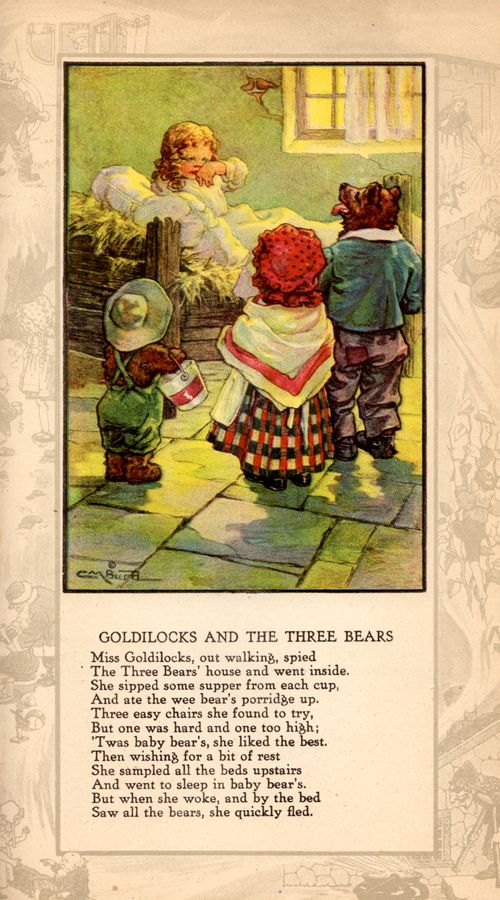 But she was an impudent, rude little girl, and so she set about helping herself.
But she was an impudent, rude little girl, and so she set about helping herself.
First she tasted the porridge of the Great Big Bear, and that was too hot for her. Next she tasted the porridge of the Middle-sized Bear, but that was too cold for her. And then she went to the porridge of the Little Wee Bear, and tasted it, and that was neither too hot nor too cold, but just right, and she liked it so well that she ate it all up, every bit!
Then Goldilocks, who was tired, for she had been catching butterflies instead of running on her errand, sate down in the chair of the Great Big Bear, but that was too hard for her. And then she sate down in the chair of the Middle-sized Bear, and that was too soft for her. But when she sat down in the chair of the Little Wee Bear, that was neither too hard nor too soft, but just right. So she seated herself in it, and there she sate till the bottom of the chair came out, and down she came, plump upon the ground; and that made her very cross, for she was a bad-tempered little girl.
Now, being determined to rest, Goldilocks went upstairs into the bedchamber in which the Three Bears slept. And first she lay down upon the bed of the Great Big Bear, but that was too high at the head for her. And next she lay down upon the bed of the Middle-sized Bear, and that was too high at the foot for her. And then she lay down upon the bed of the Little Wee Bear, and that was neither too high at the head nor at the foot, but just right. So she covered herself up comfortably, and lay there till she fell fast asleep.
By this time the Three Bears thought their porridge would be cool enough for them to eat it properly; so they came home to breakfast. Now careless Goldilocks had left the spoon of the Great Big Bear standing in his porridge.
"SOMEBODY HAS BEEN AT MY PORRIDGE!"
said the Great Big Bear in his great, rough, gruff voice.
Then the Middle-sized Bear looked at his porridge and saw the spoon was standing in it too.
"SOMEBODY HAS BEEN AT MY PORRIDGE!"
said the Middle-sized Bear in his middle-sized voice.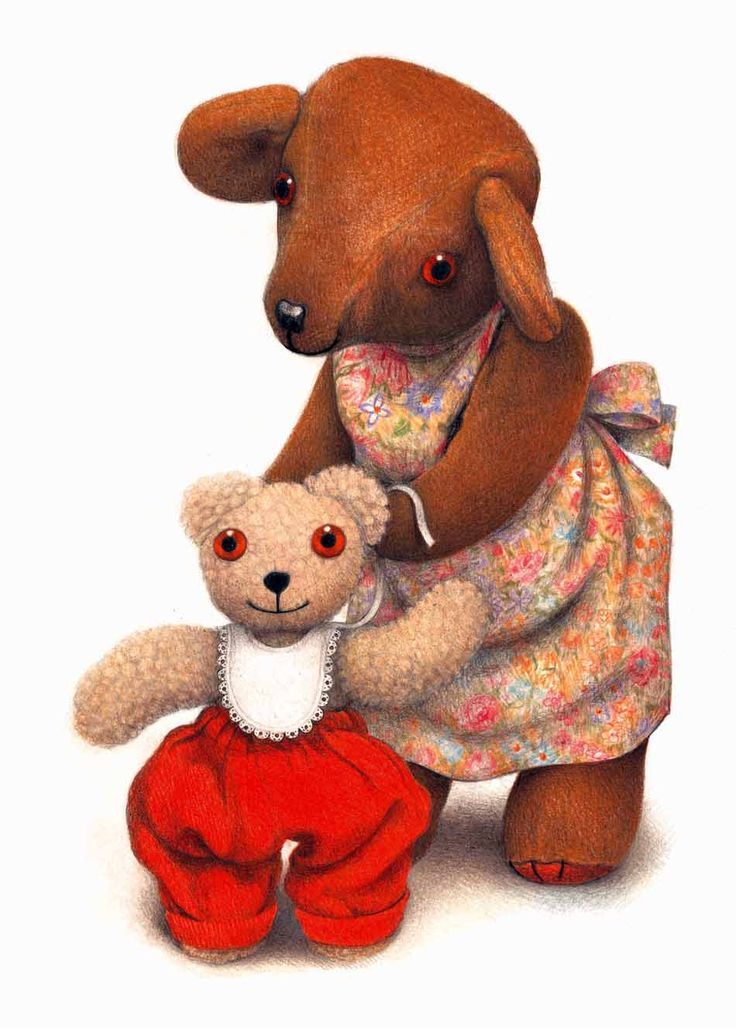
Then the Little Wee Bear looked at his, and there was the spoon in the porridge-bowl, but the porridge was all gone!
"SOMEBODY HAS BEEN AT MY PORRIDGE, AND HAS EATEN IT ALL UP!"
said the Little Wee Bear in his little wee voice.
Upon this the Three Bears, seeing that some one had entered their house, and eaten up the Little Wee Bear's breakfast, began to look about them. Now the careless Goldilocks had not put the hard cushion straight when she rose from the chair of the Great Big Bear.
"SOMEBODY HAS BEEN SITTING IN MY CHAIR!"
said the Great Big Bear in his great, rough, gruff voice.
And the careless Goldilocks had squatted down the soft cushion of the Middle-sized Bear.
"SOMEBODY HAS BEEN SITTING IN MY CHAIR!"
said the Middle-sized Bear in his middle-sized voice.
"SOMEBODY HAS BEEN SITTING IN MY CHAIR, AND HAS SATE THE BOTTOM THROUGH!"
said the Little Wee Bear in his little wee voice.
Then the Three Bears thought they had better make further search in case it was a burglar, so they went upstairs into their bedchamber.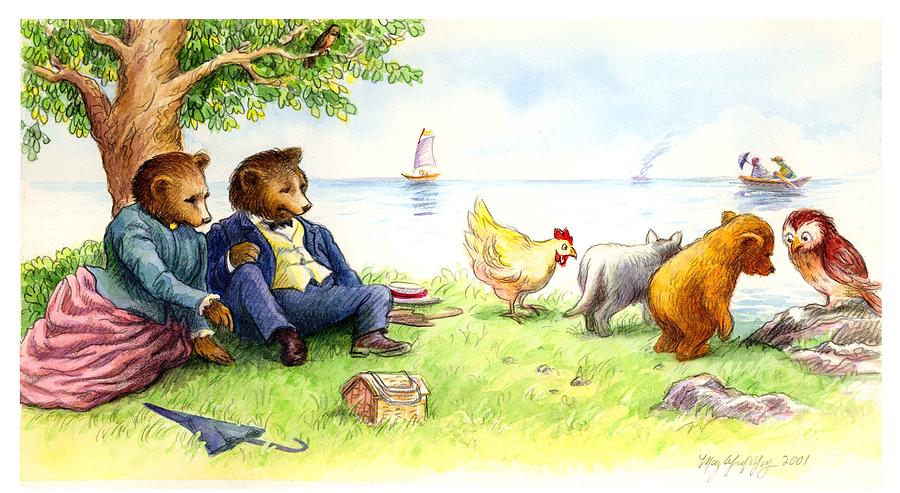 Now Goldilocks had pulled the pillow of the Great Big Bear out of its place.
Now Goldilocks had pulled the pillow of the Great Big Bear out of its place.
"SOMEBODY HAS BEEN LYING IN MY BED!"
said the Great Big Bear in his great, rough, gruff voice.
And Goldilocks had pulled the bolster of the Middle-sized Bear out of its place.
"SOMEBODY HAS BEEN LYING IN MY BED!"
said the Middle-sized Bear in his middle-sized voice.
But when the Little Wee Bear came to look at his bed, there was the bolster in its place! And the pillow was in its place upon the bolster!
And upon the pillow——?
There was Goldilocks's yellow head—which was not in its place, for she had no business there.
"SOMEBODY HAS BEEN LYING IN MY BED,—AND HERE SHE IS STILL!"
said the Little Wee Bear in his little wee voice.
Now Goldilocks had heard in her sleep the great, rough, gruff voice of the Great Big Bear; but she was so fast asleep that it was no more to her than the roaring of wind, or the rumbling of thunder. And she had heard the middle-sized voice of the Middle-sized Bear, but it was only as if she had heard some one speaking in a dream.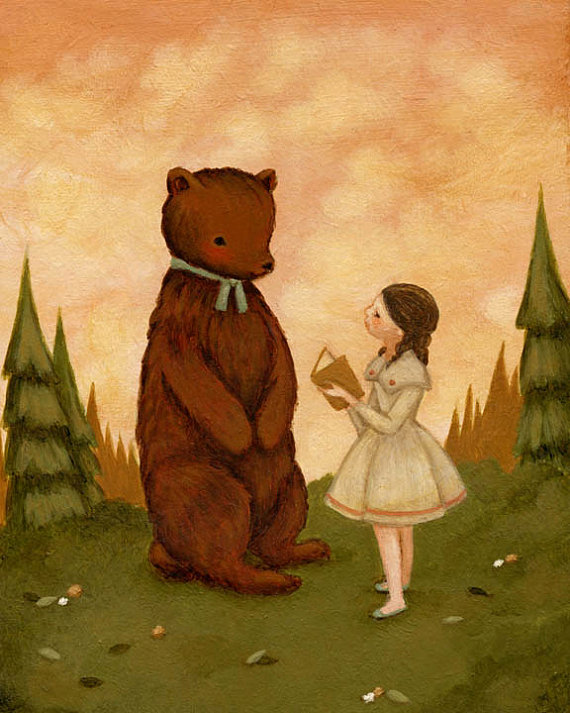 But when she heard the little wee voice of the Little Wee Bear, it was so sharp, and so shrill, that it awakened her at once. Up she started, and when she saw the Three Bears on one side of the bed, she tumbled herself out at the other, and ran to the window. Now the window was open, because the Bears, like good, tidy Bears, as they were, always opened their bedchamber window when they got up in the morning. So naughty, frightened little Goldilocks jumped; and whether she broke her neck in the fall, or ran into the wood and was lost there, or found her way out of the wood and got whipped for being a bad girl and playing truant, no one can say. But the Three Bears never saw anything more of her.
But when she heard the little wee voice of the Little Wee Bear, it was so sharp, and so shrill, that it awakened her at once. Up she started, and when she saw the Three Bears on one side of the bed, she tumbled herself out at the other, and ran to the window. Now the window was open, because the Bears, like good, tidy Bears, as they were, always opened their bedchamber window when they got up in the morning. So naughty, frightened little Goldilocks jumped; and whether she broke her neck in the fall, or ran into the wood and was lost there, or found her way out of the wood and got whipped for being a bad girl and playing truant, no one can say. But the Three Bears never saw anything more of her.
If you enjoyed this story, you might find something else you like in our collection of Children's Stories. Also featured in Pre-K Read-Aloud Stories
Goldilocks and the Three Bears
seek 00.00.00 00.00.00 loading- Download
Picture by Bertie - a retake of the classic illustration by Walter Crane.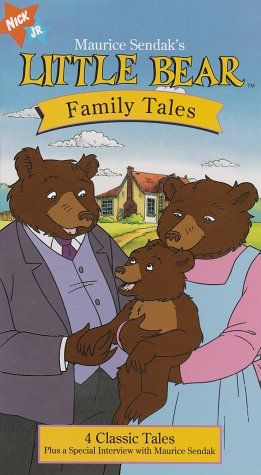
Duration 3:15.
Based on the Charming version by the Victorian writer Andrew Lang.
Read by Natasha.
Once upon a time there were three bears, who lived together in a house of their own in a wood. One of them was a little, small wee bear; one was a middle-sized bear, and the other was a great, huge bear.
One day, after they had made porridge for their breakfast, they walked out into the wood while the porridge was cooling. And while they were walking, a little girl came into the house. This little girl had golden curls that tumbled down her back to her waist, and everyone called her by Goldilocks.
Goldilocks went inside. First she tasted the porridge of the great, huge bear, and that was far too hot for her. And then she tasted the porridge of the middle bear, and that was too cold for her. And then she went to the porridge of the little, small wee bear, and tasted that. And that was neither too hot nor too cold, but just right; and she liked it so well, that she ate it all up.
Then Goldilocks went upstairs into the bed chamber and first she lay down upon the bed of the great, huge bear, and then she lay down upon the bed of the middle bear and finally she lay down upon the bed of the little, small wee bear, and that was just right. So she covered herself up comfortably, and lay there until she fell fast asleep.
By this time, the three bears thought their porridge would be cool enough, so they came home to breakfast.
“SOMEBODY HAS BEEN AT MY PORRIDGE!” said the great huge bear, in his great huge voice.
“Somebody has been at my porridge!” said the middle bear, in his middle voice.
Then the little, small wee bear looked at his, and there was the spoon in the porridge pot, but the porridge was all gone.
“Somebody has been at my porridge, and has eaten it all up!” said the little, small wee bear, in his little, small wee voice.
Then the three bears went upstairs into their bedroom.
“SOMEBODY HAS BEEN LYING IN MY BED!” said the great, huge bear, in his great, rough, gruff voice.
“Somebody has been lying in my bed!” said the middle bear, in his middle voice.
And when the little, small, wee bear came to look at his bed, upon the pillow there was a pool of golden curls, and the angelic face of a little girl snoring away, fast asleep.
“Somebody has been lying in my bed, and here she is!” Said the little, small wee bear, in his little, small wee voice.
Goldilocks jumped off the bed and ran downstairs, out of the door and down the garden path. She ran and she ran until she reached the house of her grandmama. When she told her grandmama about the house of the three bears who lived in the wood, her granny said: “My my, what a wild imagination you have, child!”
(Updated with shorter version September, 13, 2016).
Bear's heart
The wild nature has its own laws: severe and cruel, but, as a rule, logical and predictable. That is why the touching story of the adoption of an orphaned bear cub by a brown she-bear in Kamchatka surprised even zoologists.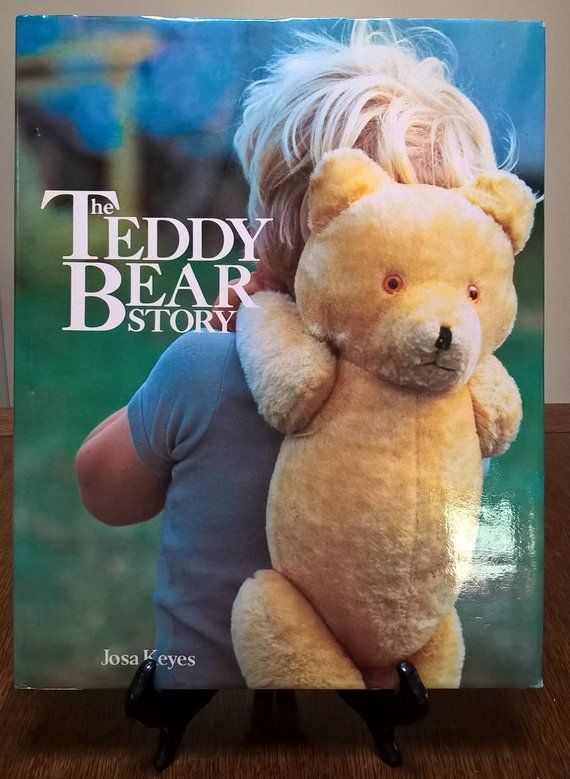 Wild animals are not inclined to mercy. But it turned out that even their rules have their exceptions
Wild animals are not inclined to mercy. But it turned out that even their rules have their exceptions
Text: Yulia Zemtsova photo: Igor Shpilenok
Nobody knows what happened to his mother. The bear cub of the year was emaciated and could hardly stand on its feet. "Yearlings" are called animals that are not yet a year old. The poor fellow kept trying to cling to a bear with adult cubs, a year older than himself, but each time he was driven away. When the bear family settled down for dinner and the mother fed her children with milk, the orphan would start screaming loudly and desperately. But the bears were impregnable: neither the mother nor the cubs let him near them.
“Reserve employees have seen more than once when orphaned bears asked to be taken to a strange family, but they never managed to get there,” says photographer Igor Shpilenok, who observed this story in the Kronotsky Reserve in Kamchatka in the summer of 2009. The researcher and employee of the famous reserve Vitaly Nikolaenko, who died seven years ago from the paws of a bear, wrote in his book “Kamchatka Bear” that the bear family is a closed community: “There is no reliable data on the reception of alien cubs by a she-bear in the wild.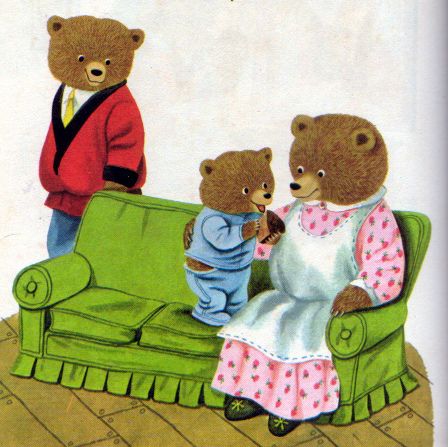 The young of the year, left without a mother, are doomed to death.”
The young of the year, left without a mother, are doomed to death.”
The story that happened in Kamchatka in the summer of 2009 is called incredible by scientists. What prompted the bear to save someone else's baby - a coincidence or instinct - no one can explain.
Everything happened simply and as if by accident. Having drunk mother's milk, the one and a half year old native daughter of the bear in a benevolent mood kicked the orphan baby with her paws - the exhausted poor thing was dying of hunger. During the game, without wanting it herself, she smeared him with fresh mother's milk, in which she was taken out for dinner. And when, after that, the starving bear cub once again tried to crawl up to the bear, she sniffed him and suddenly let him in, allowing him to drink milk and warm himself. From that moment on, they became one family.
Igor Shpilenok recalls that for the first few days, the emaciated Orphan (as he called the stray bear cub) could not even walk, but the family patiently waited for his recovery and kept close to him all the time.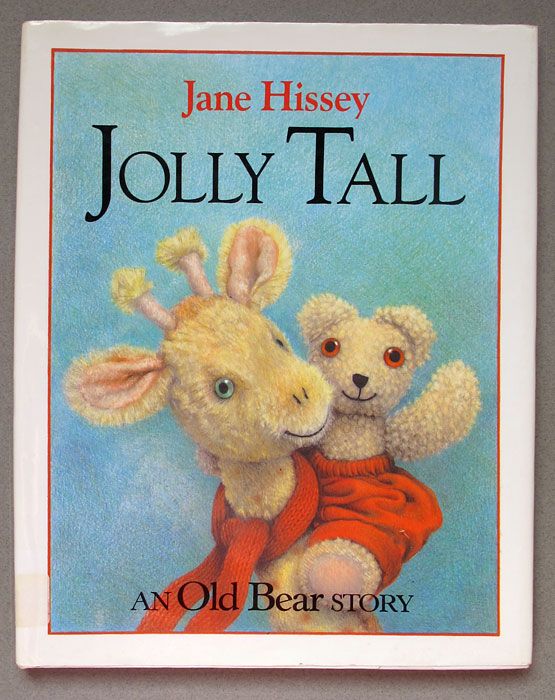 Gradually, things got better, the baby got stronger, began to grow up, and the bears moved on in search of food.
Gradually, things got better, the baby got stronger, began to grow up, and the bears moved on in search of food.
Igor Shpilenok visits Kamchatka every year. He flies to Lake Kurile, to Cape Travyanoy, which is about 200 kilometers from Petropavlovsk. His colleagues and friends, the spouses Vasily and Elena Maksimova, live there. They work as inspectors for the protection of the protected area of the Kronotsky Reserve, which manages the South Kamchatka Federal Reserve. The Maksimovs protect this territory from poachers, observe nature, and keep track of animals.
Around the cordon where Vasily and Elena live, in the summer there is a real bear kindergarten. All bear families consist only of a mother and cubs: fathers do not participate in raising offspring and live as solitary egoists. Moreover, often in areas with a high density of the bear population, it is the fathers who are the main enemies of the cubs. Often male cannibals prey on their own children.
“Male bears really do not raise children,” explains zoologist Alexei Tikhonov, deputy director of the Zoological Institute of the Russian Academy of Sciences in St.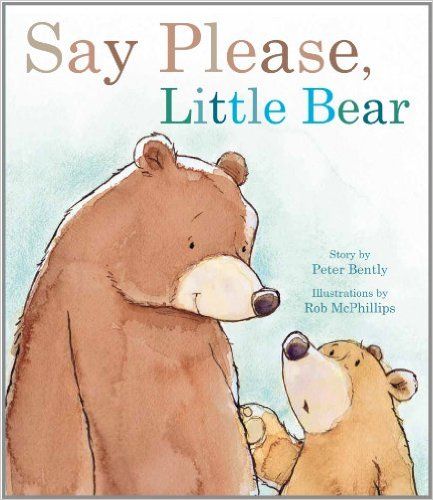 Petersburg. “These are not herd animals, they live alone. And the female is really constantly forced to protect her cubs from the males.”
Petersburg. “These are not herd animals, they live alone. And the female is really constantly forced to protect her cubs from the males.”
Bear cannibalism is especially developed in famine years, when there is a poor harvest of berries and cedar cones in the forests. That's when the connecting rod bears appear: animals that try to gain fat for hibernation in any way and therefore prey on everything that moves, including people. Such animals are capable of killing even an adult bear.
How can a female protect her cubs? But forces are always unequal. Therefore, a mother bear seeks protection from a person, trying to settle with her babies as close as possible to human habitation, the smell of which scares off cannibal males. “In the summer, three or four families with cubs constantly stayed at the cordon,” confirms Igor Shpilenok. “It was with one of them that this whole touching story happened.”
For a month and a half, in the pre-dawn twilight, Igor went to the mouth of the Khakitsyn River - about 8 meters from the cordon - to observe the life of Orphan and his new family there.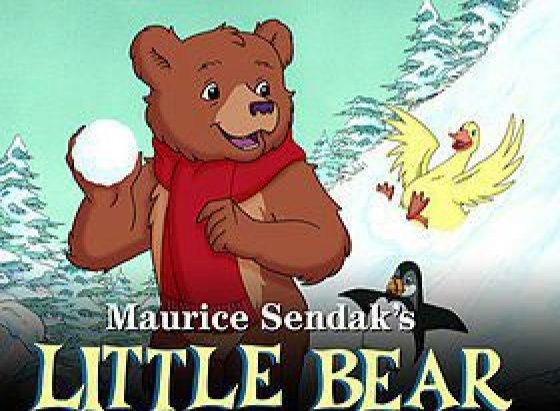
“The animals came from the tundra, their muzzles were smeared with blueberries. They swam across the river, lay down on the edge of the spit, and I managed to photograph them against the backdrop of the lake and the Ilyinskaya Sopka volcano. Against the background of his adoptive brothers, Sirotka seemed like a kitten next to sheep dogs,” says the photographer. - Nearby, another good-natured bear often fished with a well-fed bear cub. The two families got along well and parted peacefully at chance meetings. But almost every day a third family also came: a she-bear with four cubs, who were very aggressive, tirelessly chasing gulls, ducks and foxes. They even tried to snap at us.” Four little villains bullied all the bears passing by - small and adult. “Once this friendly four, standing in a square, without the help of their mother, drove a large childless bear from the mouth of the river, and the smallest bear cub was the ringleader,” says Igor Shpilenok.
The photographer sat for hours on a snag in the middle of a sandy spit, and soon the bears stopped paying attention to him. Moreover, the she-bears, going fishing, sometimes left their cubs next to him - three or four meters away, using a person with a camera to protect themselves from cannibal males.
Moreover, the she-bears, going fishing, sometimes left their cubs next to him - three or four meters away, using a person with a camera to protect themselves from cannibal males.
“It was very scary,” admits Igor Shpilenok. — But I had no choice! All this time I had to just turn to stone, because one careless movement or a sharp sound could provoke an attack. But there are no tall trees nearby to climb them, and there would be no time for this, because the animals were sitting just a few steps away from me.
Orphan's family was quite successful in hunting: his stepmother was more successful in catching fish than other she-bears. Moreover, the females never carry their catch to the cubs, but eat it themselves, hiding in the bushes or sitting right in the water. Children have to be content with leftover fish at best. “For the mother, the main thing in this process is not to feed the children, but to teach them to get their own food,” explains zoologist Alexei Tikhonov. As a rule, he got a fish head.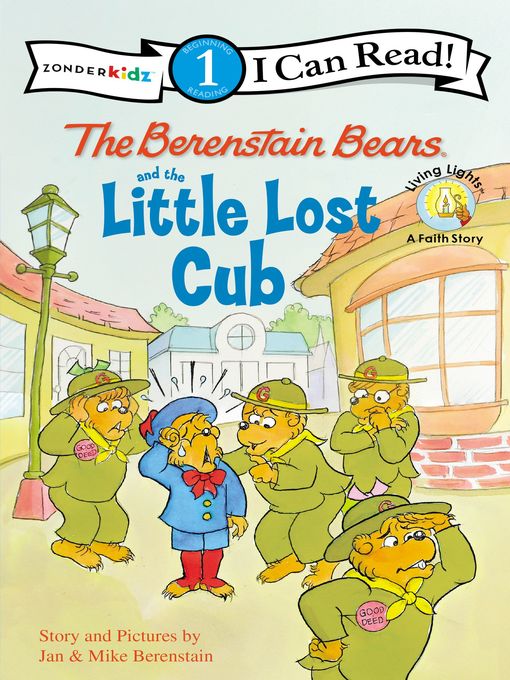 His sister went downstream and tried to fish out leftovers from the water. Orphan himself was too small and weak: in the river he was carried away by the current and he had to wait for his new family on the shore. But when the mother bear returned from fishing, it was the adoptee who, with a piercing cry, could more successfully pity her mother and beg for milk. The bear lay on her back, and the children began to eat.
His sister went downstream and tried to fish out leftovers from the water. Orphan himself was too small and weak: in the river he was carried away by the current and he had to wait for his new family on the shore. But when the mother bear returned from fishing, it was the adoptee who, with a piercing cry, could more successfully pity her mother and beg for milk. The bear lay on her back, and the children began to eat.
Mother bear spent more time with her foster cub than with her own children. The bear cubs treated him differently. The foster brother liked to mock the orphan, jokingly pulling out pieces of wool from his head, playing with him like with a ball. And his sister, on the contrary, took care of him: the first of the whole family began to worry when the baby fell behind at the crossings or refused to follow the family across the river.
“We watched more than once how the little bear, leaving her mother and brother, returned to the tired Orphan and lay down next to him, and he touched her touchingly,” recalls Igor Shpilenok.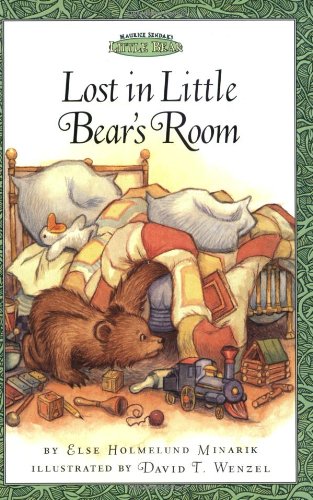
According to the theory of evolution, the task of living beings is to pass on their genes to subsequent generations. Adoption and rearing of other people's cubs contradict this theory. But it seems that this bear's maternal instinct turned out to be stronger than Darwin's theory.
“This is very atypical for bears. This is the first time I’ve encountered this,” says Alexei Tikhonov from the Zoological Institute of the Russian Academy of Sciences. According to him, usually the female participates in the rut when she already has six-month-old cubs. With them, she lays down in a den, and then new offspring is born to her. The next summer, the older cubs leave her, and in the winter new cubs are born. Intermittently, this process is repeated constantly. "That's why a she-bear cannot accept and feed another cub, especially if it's less than a year old."
Orphan noticeably hampered the freedom of movement of the bear family in search of food. In autumn, closer to wintering, such a weak cub could significantly reduce the chances of survival for all its new relatives.
On the evening of August 18, Igor Shpilenok was sitting on the spit as usual. Nearby, a bear was running in shallow water, catching fish for her dinner. The cubs were basking in the evening sun: the Orphan was sitting cuddled up to his sister, and his brother was sleeping peacefully next to him. Two young bears came to their shore along the river and lay down on the sand nearby. And then a she-bear came out of the bushes with four of those very aggressive and cocky cubs. She slowly climbed into the water, and her cubs sat down in a group not far from the orphan family. Gradually, 13 bears gathered on a small beach. It was obvious that the tension was building up. Two females chased one salmon and almost collided. They stood up on their hind legs, bared their teeth at each other, roared, but dispersed to the sides. And at that moment Orphan decided for some reason to approach his foster mother. He went the shortest way, along the water's edge - exactly where, unfortunately, the mother of four bullies, angry with unsuccessful fishing, came out of the river to meet him.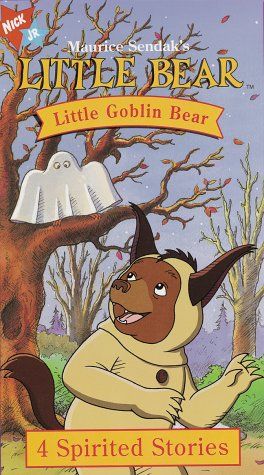 The sleepy baby did not give way to her. And then the irritated bear grabbed him by the spine and shook him violently. The foster mother, who was literally a stone's throw from the Orphan, rushed to his aid and grabbed the bear by the neck. The brother and sister rushed to protect the mother and the baby - a many-voiced animal roar was heard, splashes of water, sand, and wool flew. “I grabbed a gun and rushed to the overexcited bear pile, still hoping to save the bear cub,” the photographer recalls. - Shot up - and all the bears, except for the foster family, scattered through the bushes. The dying Orphan was still stirring. Mother and children bared their teeth, protecting him from me. I returned to the camera, took a couple of farewell shots and wandered across the river to the tower to the frightened tourists.”
The sleepy baby did not give way to her. And then the irritated bear grabbed him by the spine and shook him violently. The foster mother, who was literally a stone's throw from the Orphan, rushed to his aid and grabbed the bear by the neck. The brother and sister rushed to protect the mother and the baby - a many-voiced animal roar was heard, splashes of water, sand, and wool flew. “I grabbed a gun and rushed to the overexcited bear pile, still hoping to save the bear cub,” the photographer recalls. - Shot up - and all the bears, except for the foster family, scattered through the bushes. The dying Orphan was still stirring. Mother and children bared their teeth, protecting him from me. I returned to the camera, took a couple of farewell shots and wandered across the river to the tower to the frightened tourists.”
An orphan bear who happily escaped from starvation died as a result of an absurd accident.
“The case in Kamchatka deserves special attention,” says Ivan Seredkin, Candidate of Biological Sciences, Senior Researcher at the Pacific Institute of Geography of the Russian Academy of Sciences.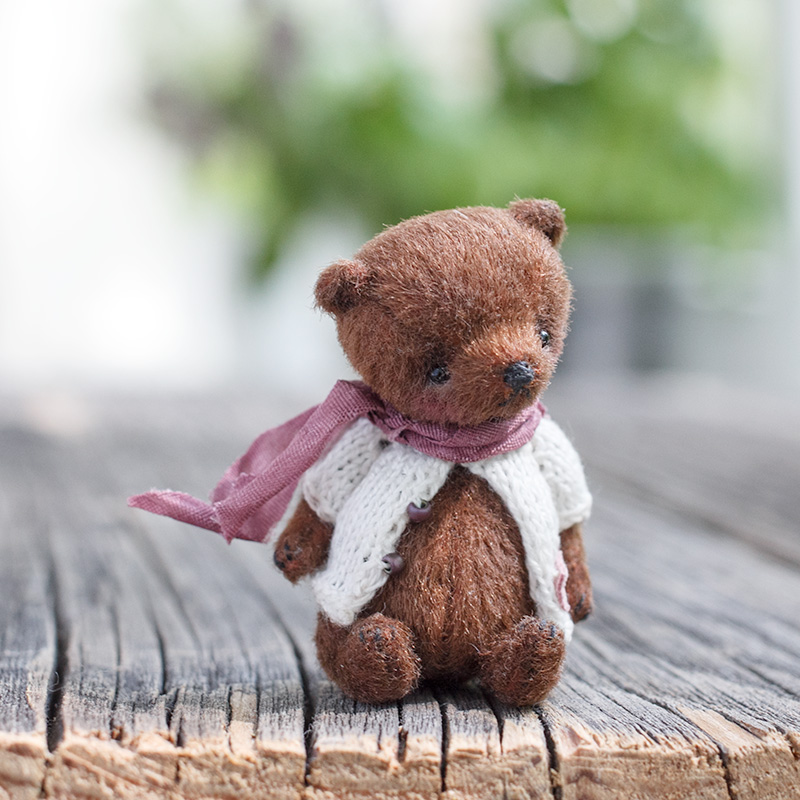 “But, probably, it would be wrong to interpret the behavior of animals solely from the standpoint of the biological laws adopted by scientists.” Because science has yet to understand the fine line between instincts and feelings, animals and humans.
“But, probably, it would be wrong to interpret the behavior of animals solely from the standpoint of the biological laws adopted by scientists.” Because science has yet to understand the fine line between instincts and feelings, animals and humans.
Zemtsova Y. Bear heart / foto. I. Shpilenok // GEO. - 2010. - No. 4. - S. 36-47.
Author — Yu. Zemtsova, I. Shpilenok
Materials
- serdce2.jpg
- serdce3.jpg
- serdce4.jpg
- serdce5.jpg
- serdce6.jpg
- serdce7.jpg
- serdce8.jpg
- serdce9.jpg
Share link:
The story of Sima and Syoma: tame cubs became the stars of the Irkutsk village | SOCIETY
Two-month-old bear cubs in one of the Irkutsk villages come to look from afar.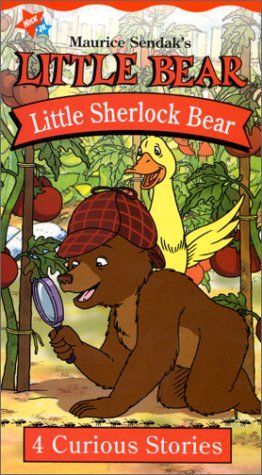 Syoma and Sima are still quite tame, but they already know how to show character.
Syoma and Sima are still quite tame, but they already know how to show character.
Parents: Misha and Masha
A couple of bears who have recently become parents - Misha and Masha - settled in the aviary of a country resting place for Irkutsk residents called "Royal Hunt" 9 years ago. They were brought here by foresters from the Nizhneudinsky district when they were very young. In the forest, they came across a she-bear, which they had to shoot, but the cubs took pity and decided to place them in the regional center. However, they did not take the kids to the circus or the zoo gallery. Having pushed around, the men simply left the cubs in the "Hunt". The owner of the establishment, Oleg Pushkarev, did not look for a home for the cubs, but built a large aviary in the yard, since there was always meat waste from the restaurant kitchen.
For 9 years, Misha and Masha have grown into big bears, especially Misha.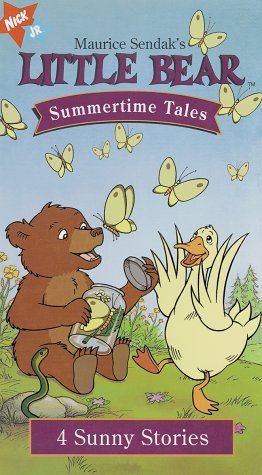 If this heavyweight stands on its hind legs, then even the tallest man loses his self-confidence.
If this heavyweight stands on its hind legs, then even the tallest man loses his self-confidence.
Bears have long become a landmark in the village of Smolensk region, local residents take children to the aviary and bring condensed milk with them, which Misha and Masha adore.
Both bears are curious and friendly, they look at their guests with interest, especially singling out those with cameras - they love to pose.
Bears are friendly to people, play in front of them. Photo: AiF / Roman SizykhThe first time Misha and Masha became parents three years ago. However, motherhood then ended in tragedy. One of the cubs was killed by a father bear.
- In nature, these animals do not live in pairs, and the mother takes care of the offspring, - says Ekaterina Pushkareva, the daughter of the owner of the bears. – The teddy bear happened to be next to an adult bear by accident.
The next year the couple again had offspring, and again two cubs of different sexes. They were almost immediately taken away from their mother, because there was no way to separate the adult bears, and not to build a new enclosure.
The bearish look both frightens and delights. Photo: AiF / Roman Sizykh- When the bears grew up, they were taken to the Moscow circus tent of Petrovets, - Katya spoke about the fate of her wards. - This summer the circus will come to Irkutsk again and we will see how our bears perform.
Tame cubs
This year, through the efforts of Misha and Masha, Syoma and Sima were born. In general, the physiology of bears is such that cubs appear in winter, during hibernation. These are practically premature bears, no larger than a newborn puppy. Anyone who sees newly born bears for the first time simply does not believe that the future owners of the forest are in front of him - the cubs practically fit on the palm of your hand.
Bear cubs Sima and Syoma live separately from their parents. Photo: AiF / Roman Sizykh
Photo: AiF / Roman Sizykh Syoma and Sima are already 2 months old, but they still hardly walk, they only roll from paw to paw, but at the same time they already show character - they roar when something doesn’t happen the way they want. For example, when they are not picked up for a long time.
- Sima and Sima behave just like children, - says Katya Pushkareva. - Most of the time they sleep, eat 5 times a day, I myself bottle feed them.
The bears are brought up by the inhabitants of the Royal Hunt. Photo: AiF / Roman Sizykh
Katya Pushkareva is 17 years old and has lived most of her life side by side with bears.
- Perhaps I understand them better than anyone else. For me, this is part of life. They do not even hibernate in our country, because there is a lot of food, there is no need to save energy.
In the near future, newborn bears will receive veterinary passports, they are vaccinated regularly.
When asked what will happen to the kids when they grow up, Katya answers:
- I think they will be taken away, like the previous ones.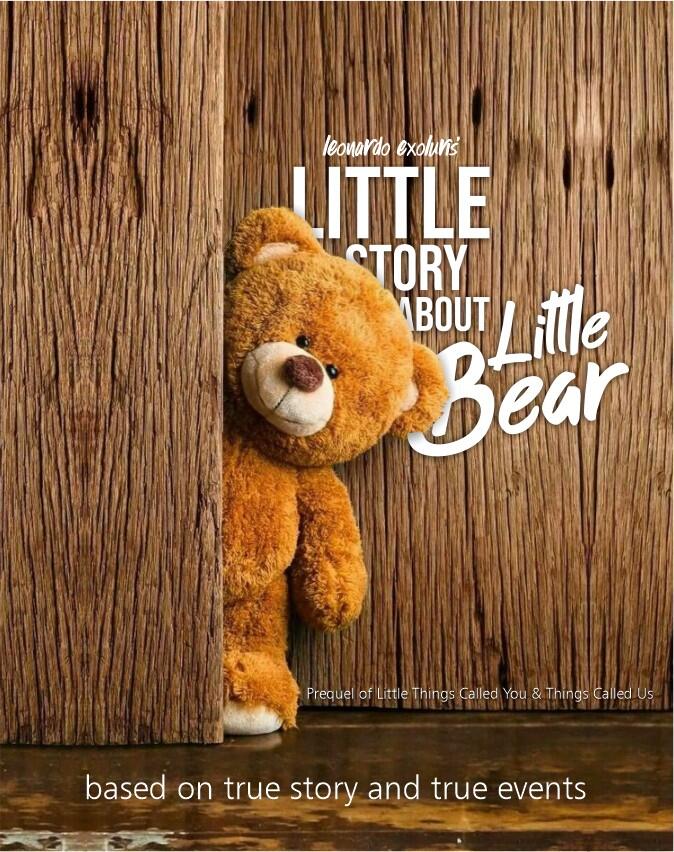 We never try to accommodate bear cubs, especially since they are not taken to the Irkutsk circus and zoo at all. But people learn about us and come themselves.
We never try to accommodate bear cubs, especially since they are not taken to the Irkutsk circus and zoo at all. But people learn about us and come themselves.
Little Sima and Syoma are still quite tame. They simply cannot live without human care. In a couple of weeks, the bears will become the main local attraction, although even now there is more than enough attention for the cubs, everyone wants to see them - both visitors and local children.
Milk is the only food the cubs eat. A little later, they will begin to feed them with semolina. in Photo: AiF / Roman SizykhAlthough the stompers are still babies, they already have very strong and long claws. Therefore, you should not forget that predators are not in front of you. We recommend that everyone read our memo on how to behave when meeting with a clubfoot.
Bear cubs Sima and Syoma | Photo gallery
Bear cubs are born very small. No more than a newborn puppy. © AiF / Roman Sizykh
Bears need to walk, but not for long. Freeze. © AiF / Roman Sizykh
Freeze. © AiF / Roman Sizykh
A short time in the snow and Sima and Syoma begin to roar. © AiF / Roman Sizykh
The eyes of the bears are still blue. © AiF / Roman Sizykh
Although they are small, they can already compete with each other. © AiF / Roman Sizykh
The boy Syoma is slightly larger than his sister. © AiF / Roman Sizykh
Learning to walk is very difficult. © AiF / Roman Sizykh
Bears are more attached to some people. © AiF / Roman Sizykh
Like children, cubs grow up on cow's milk. © AiF / Roman Sizykh
They will suck a bottle for up to a year, or even more. © AiF / Roman Sizykh
The father of Sima and Syoma, a bear named Misha. He is one and a half human height. © AiF / Roman Sizykh
Misha and Masha live in the same aviary, but their children were taken away for security reasons.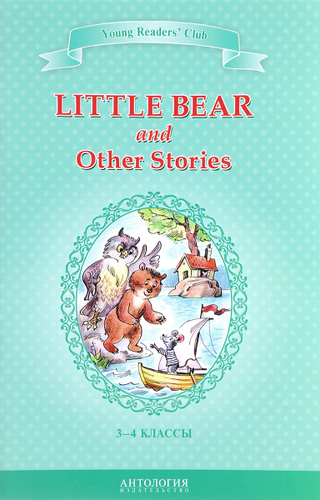 © AiF / Roman Sizykh
© AiF / Roman Sizykh
© AiF / Roman Sizykh
Bear cubs Sima and Syoma | Photo gallery
Bear cubs are born very small. No more than a newborn puppy. © AiF / Roman Sizykh
Bears need to walk, but not for long. Freeze. © AiF / Roman Sizykh
For a short time in the snow, Sima and Syoma begin to roar. © AiF / Roman Sizykh
The eyes of the bears are still blue. © AiF / Roman Sizykh
Even though they are small, they can already compete with each other. © AiF / Roman Sizykh
The boy Syoma is slightly larger than his sister. © AiF / Roman Sizykh
Learning to walk is very difficult. © AiF / Roman Sizykh
Bears are more attached to some people. © AiF / Roman Sizykh
Like children, cubs grow up on cow's milk.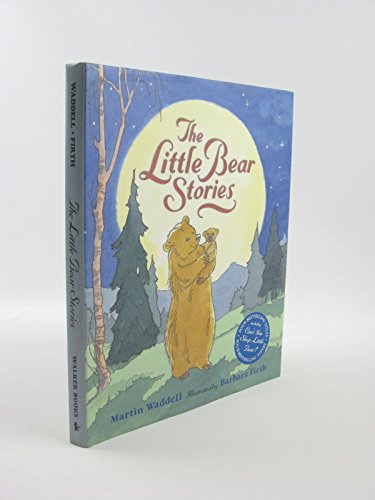 © AiF / Roman Sizykh
© AiF / Roman Sizykh
They will suck on a bottle for up to a year or more. © AiF / Roman Sizykh
The father of Sima and Syoma, a bear named Misha. He is one and a half human height. © AiF / Roman Sizykh
Misha and Masha live in the same aviary, but their children were taken away for security reasons. © AiF / Roman Sizykh
© AiF / Roman Sizykh
Comment
Lyudmila Ivushkina , coordinator of the Irkutsk zoo gallery.
- Brown bears are well kept in captivity. This is the main problem. People give birth to bears, and then they don’t know what to do with the offspring, because these predators breed perfectly even in cages. Zoos are trying not to take cubs, it is expensive to keep them, each needs a separate place. Couples generally never contain together.
The only way out for many breeders is to give the animal to the circus.